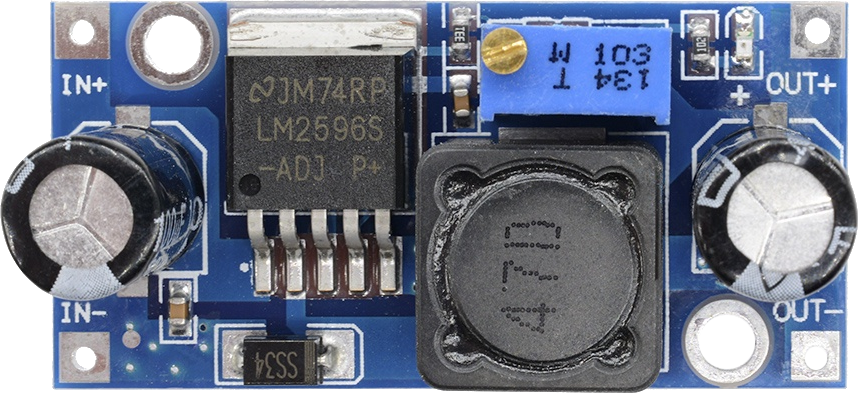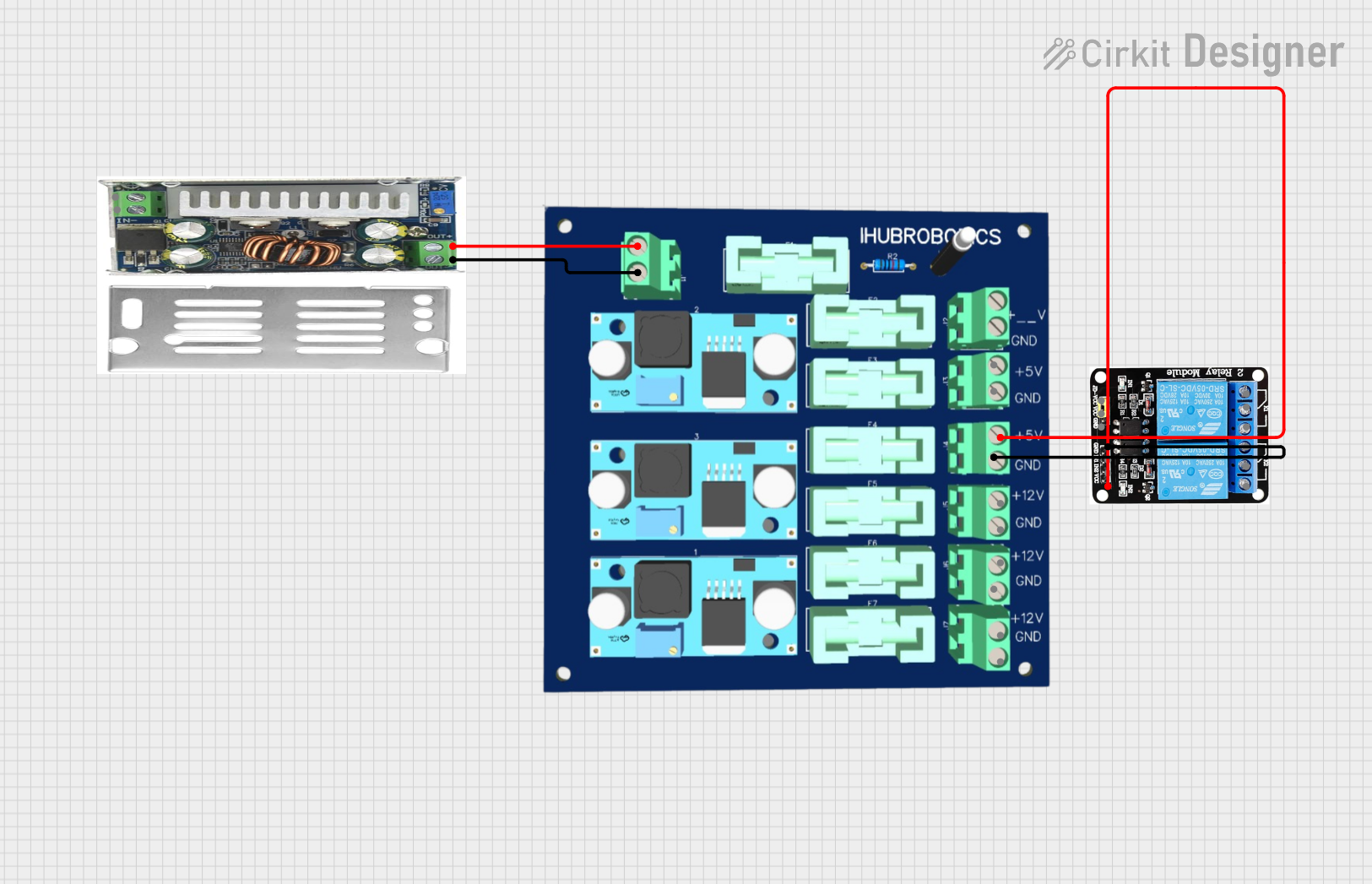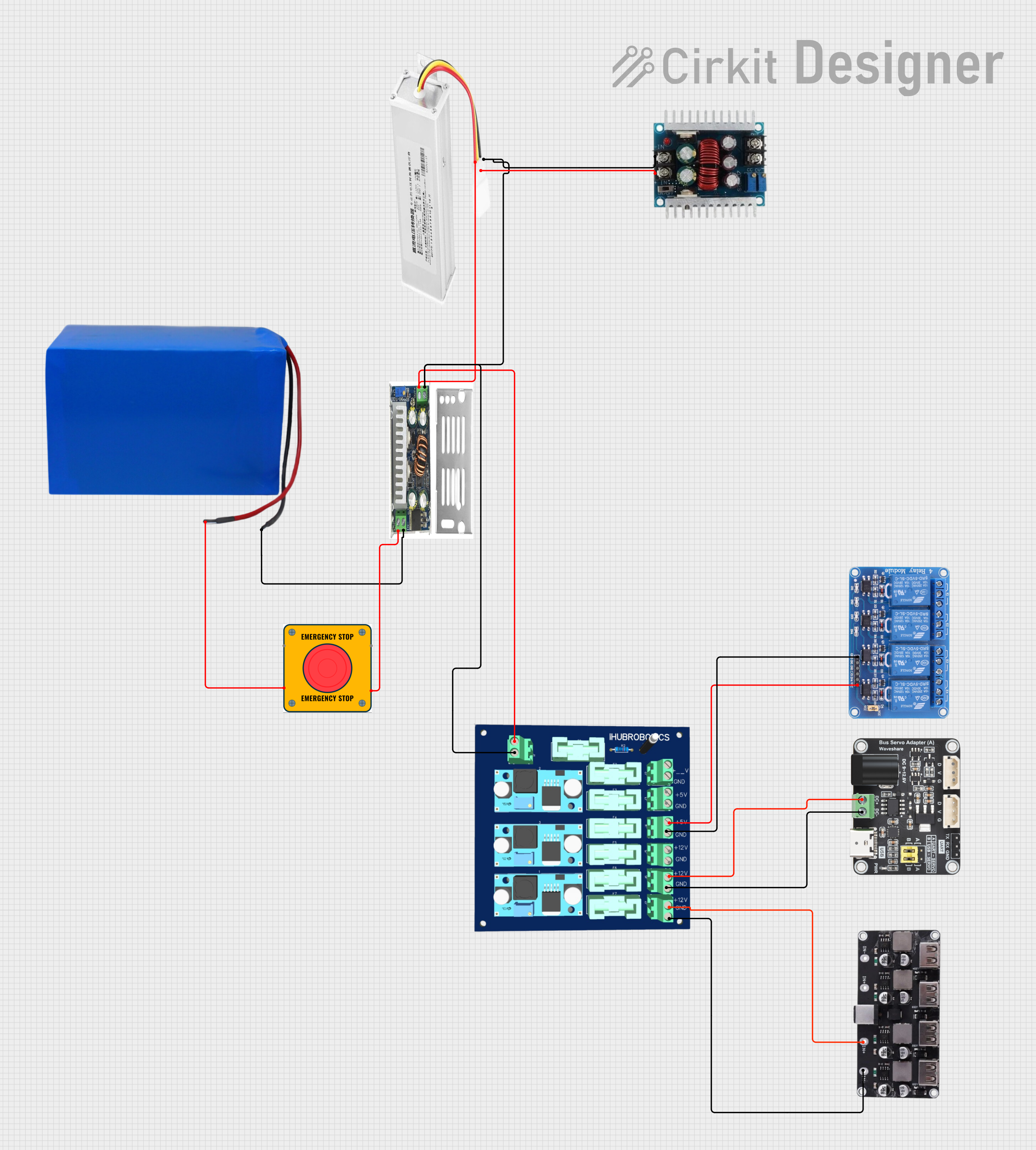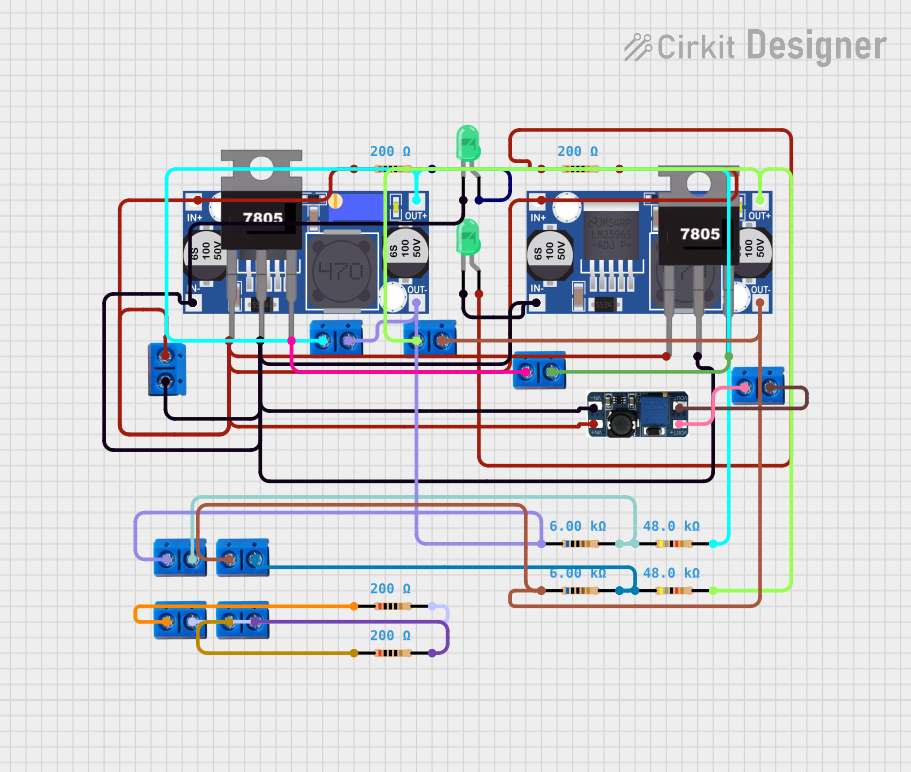
How to Use DC DC converter: Examples, Pinouts, and Specs

 Design with DC DC converter in Cirkit Designer
Design with DC DC converter in Cirkit DesignerIntroduction
A DC-DC converter is an essential component in modern electronics, enabling devices to operate at different voltage levels from a given power supply. The Arceli DC-DC converter is designed to provide a reliable and efficient voltage conversion solution, suitable for a wide range of applications including battery-powered devices, power regulation for embedded systems, and adjustable power supplies for prototyping.
Common applications include:
- Mobile and portable devices
- Embedded systems
- Power supply units
- Automotive electronics
- Renewable energy systems
Explore Projects Built with DC DC converter

 Open Project in Cirkit Designer
Open Project in Cirkit Designer
 Open Project in Cirkit Designer
Open Project in Cirkit Designer
 Open Project in Cirkit Designer
Open Project in Cirkit Designer
 Open Project in Cirkit Designer
Open Project in Cirkit DesignerExplore Projects Built with DC DC converter

 Open Project in Cirkit Designer
Open Project in Cirkit Designer
 Open Project in Cirkit Designer
Open Project in Cirkit Designer
 Open Project in Cirkit Designer
Open Project in Cirkit Designer
 Open Project in Cirkit Designer
Open Project in Cirkit DesignerTechnical Specifications
Key Technical Details
- Input Voltage Range: 2.5V to 15V DC
- Output Voltage Range: 0.5V to 30V DC (adjustable)
- Maximum Output Current: 3A (with heat sink)
- Conversion Efficiency: Up to 95%
- Switching Frequency: 150kHz
- Operating Temperature: -40°C to +85°C
Pin Configuration and Descriptions
| Pin Number | Name | Description |
|---|---|---|
| 1 | VIN | Input voltage (2.5V to 15V DC) |
| 2 | GND | Ground reference |
| 3 | VOUT | Output voltage (0.5V to 30V DC, adjustable) |
| 4 | ADJ | Adjustment pin for output voltage |
| 5 | EN | Enable pin for turning the converter on/off |
Usage Instructions
Integrating the DC-DC Converter into a Circuit
Connecting Input Power:
- Connect the positive terminal of your DC power source to the VIN pin.
- Connect the negative terminal to the GND pin.
Setting Output Voltage:
- Adjust the output voltage by turning the potentiometer connected to the ADJ pin.
- Use a multimeter to measure the VOUT pin and set it to the desired voltage level.
Enabling the Converter:
- The EN pin can be left floating for normal operation.
- To switch the converter on/off via a microcontroller, connect the EN pin to a digital output pin.
Connecting the Load:
- Connect the load to the VOUT and GND pins.
- Ensure the load does not exceed the maximum current rating of 3A.
Best Practices
- Always verify input and output voltages with a multimeter before connecting sensitive loads.
- Use a heat sink for applications drawing currents close to the maximum rating.
- Place a capacitor at the output to smooth out voltage ripples if necessary.
- Avoid placing the converter in high-temperature environments to prevent overheating.
Example Code for Arduino UNO
// Example code to enable and disable the Arceli DC-DC converter using an Arduino UNO
const int enablePin = 7; // Connect the EN pin of the converter to digital pin 7
void setup() {
pinMode(enablePin, OUTPUT); // Set the enable pin as an output
}
void loop() {
digitalWrite(enablePin, HIGH); // Turn on the DC-DC converter
delay(5000); // Keep it on for 5 seconds
digitalWrite(enablePin, LOW); // Turn off the DC-DC converter
delay(5000); // Keep it off for 5 seconds
}
Troubleshooting and FAQs
Common Issues
- Output voltage is too low or too high: Ensure the ADJ pin is correctly adjusted.
- Converter is overheating: Check if the current draw is within the limit and if a heat sink is necessary.
- No output voltage: Verify connections, input voltage, and if the EN pin is enabled.
Solutions and Tips
- If the output voltage does not stabilize, add a capacitor to the output to filter noise.
- Use thicker wires for higher currents to minimize voltage drops.
- If the converter does not turn on, check the EN pin connection and the input voltage.
FAQs
Q: Can I use this converter to charge batteries? A: Yes, but ensure the output voltage is appropriate for the battery and that current limits are observed.
Q: Is it possible to synchronize multiple converters? A: This model does not support synchronization. You would need a converter with a sync pin for that feature.
Q: How do I know if I need a heat sink? A: If the converter is running hot or if you're drawing current near the 3A limit, a heat sink is recommended.
For further assistance, please contact Arceli support or refer to the detailed datasheet provided with the component.